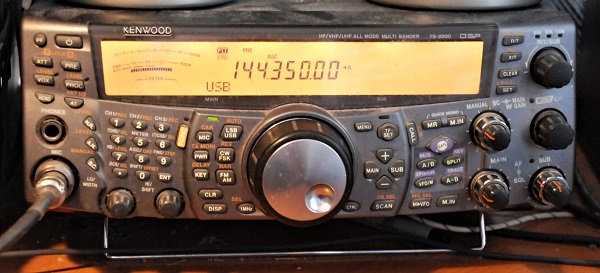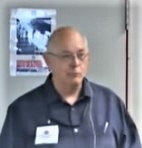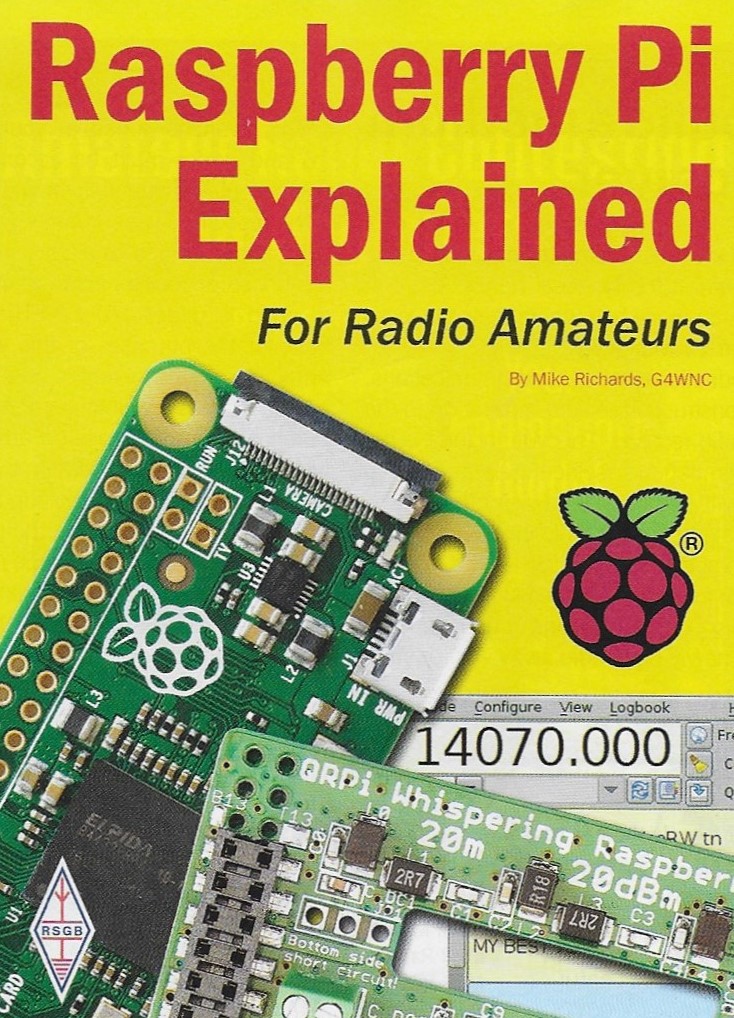- Details
- Written by Alan GM3PSP
- Hits: 861
On May 6th the 5th net net participants were: Colin GM4HWO, Pete GM4BYF, Robin GM4YPL, Brian GM8BJF, Mike GM4IGS, Briain GM8PKL, Peter GM4DTH, Norrie GM1CNH, John GM8OTI, Malcolm GM3TAL, Brian GM4DIJ, Alan GM3PSP, Mike GM8KCS,, with Willy GM0CII calling in at the end.
- Details
- Written by Alan GM3PSP
- Hits: 832
Another good net this week on Wednesday 29th April with Colin GM4HWO, John GM8OTI, Mike GM8KCS, Peter GM4DTH, Alan GM3PSP, Briain GM8PKL, Brian GM4DIJ, Melvyn GM4HYR, Robin GM4YPL and Brian GM8BJF. BJF in Peebles could only be heard by DIJ located on Corstorphine Hill.

Rig of John GM8OTI used on the net.
- Details
- Written by Alan GM3PSP
- Hits: 813
Another good turnout for the third "LRS Viral Net" on Wednesday 22nd April: Controller Colin GM4HWO, Pete GM4BYF, Brian GM8BJF, John GM8OTI, Alan GM3PSP, Briain GM8PKL, Peter GM4DTH, Melvyn GM4HYR, Norrie GM1CNH and welcome guest Bruce GM4BDJ. Most stations were using vertically-polarised antennas. Brian GM8BJF (Peebles) and Bruce GM4BDJ (Langholm) were only heard by one or two stations in Edinburgh.
- Details
- Written by Alan GM3PSP
- Hits: 840
The second LRS "Viral Net" on Wednesday 15th April had a turnout of 12 club members and was again controlled by Colin GM4HWO. The participants were: Pete GM4BYF, Briain GM8PKL, John GM8OTI, Alan GM3PSP, Peter GM4DTH, Colin GM4HWO, Melvyn GM4HYR, Mike GM8KCS, Brian GM8BJF, Norrie GM1CNH, Brian GM4DIJ, and Robin GM4YPL. Brian GM8BJF in Peebles was only heard weakly by Pete GM4BYF and Brian GM4DIJ.
- Details
- Written by Alan GM3PSP
- Hits: 881
During the Covid-19 virus shut-down when normal LRS meetings could not be held at the Braid Hills Hotel etc, it was decided to hold weekly nets on 2 metres at the normal club time of 20:00h on Wednesdays. These turned out to be a big success with good participation every week and even some non-members calling in.

Report by Peter GM4DTH on 1st LRS Viral Net on 8th April 2020:
There were 8 stations active with a 9th listening for us. The net opened at 20:00 on 144.350MHz SSB. The net coordinator was Colin GM4HWO (Liberton). Stations active were Pete GM4BYF (Fairmilehead), Robin GM4YPL (Linlithgow), Mike GM8KCS (Fairmilehead), Peter GM4DTH (Bruntsfield), Norman GM1CNH (Corstorphine), Brian GM4DIJ (Corstorphine) and Brian GM8BJF (Peebles). Mike GM4IGS (Troon) was listening but did not hear us. All stations with the exception of GM8BJF could hear each other at good strength and readability. Minor netting errors existed and RIT was used to tune out the errors. There was a mixture of vertical and horizontal polarisation used with power levels ranging from 20W to 400W. Pete at Fairmilehead was using the 400W and his beam to try and get a signal down to Brian GM8BJF in Peebles. Brian was using a low vertical dipole and could hear GM4BYF with difficulty. In Edinburgh GM4HWO, GM4BYF and GM4DTH could detect Brian but his readability was no better than R1. The net drew to a close at 20:50 with a decision to repeat it in a week's time. Brian plans to try and improve his aerial for next week.
Photo - Kenwood TS-2000 used on the net by Alan GM3PSP with a vertical antenna at Fairmilehead.
- Details
- Written by Alan GM3PSP
- Hits: 1179

Geoff Crowley MM5AHO
Qualifications: B.Eng metallurgy, MBA, Yachtmaster Ocean Qualified skipper. Originally from New Zealand, Geoff moved to Scotland in 1993 from Iceland.
At the meeting on March 11th our good friend Geoff Crowley MM5AHO returned to talk about "How Not to Sail to the Faeroe Islands". There was a good turnout including two visitors from the Cockenzie club, in spite of the current coronavirus concern.
Synopsis: Sleep deprivation is a problem in radio contesting and also in sailing single-handed. Geoff Crowley does both, and he recounted a few experiences during 2019 when lack of sleep caused problems in both sailing in his yacht Contender and in contesting. Some further examples from 2018, including a 1000 mile round trip to Rockall added interest about managing 24 hour activity.
Read more: 11th March 2020 - How NOT to Sail to the Faeroe Islands - Geoff Crowley MM5AHO
- Details
- Written by Alan GM3PSP
- Hits: 1487

This lecture was presented at the RSGB 2019 Convention by well-known RadCom author Mike Richards G4WNC, who also happens to be the OM of RadCom Managing Editor, Elaine Richards G4LFM.
Mike gave the background to the Raspberry Pi series of low-cost single-board computers. These were developed starting in 2012 by Cambridge University to encourage more students to study computer science, whose numbers had been dropping. Manufactured at the Sony factory in Wales, the initial estimate was a need for about 1000 units. As of mid-2019, more than 25 million had been produced, currently at a rate of 10,000 per week!
Mike described the various versions of the Raspberry Pi and their many applications.
Click for Video lecture (RSGB Members-only initially; later on YouTube).
Click for lecture slides from 2017 presentation.
=====================================================================

Mike is also the author of a new book from the RSGB with the same title as the lecture.
====================================================================
- Details
- Written by Alan GM3PSP
- Hits: 1903

LRS member Dr Roger Hill, accompanied by his XYL Kath, who contributed to his presentation with information about the training sessions for schoolkids, talked about "Robot Wars + Rampaging Chariots >£0.25m" at the meeting on 12th February 2020. Peter Bennett, the team leader at Selex, was also present, and appears in a number of videos which were shown. YouTube links and availability of construction kits are provided at the bottom.

Examples of the PCBs for the kids' constructional projects.
Page 3 of 5

